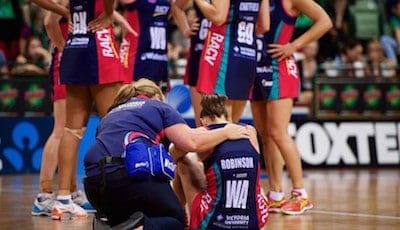
Blog, Sports Care
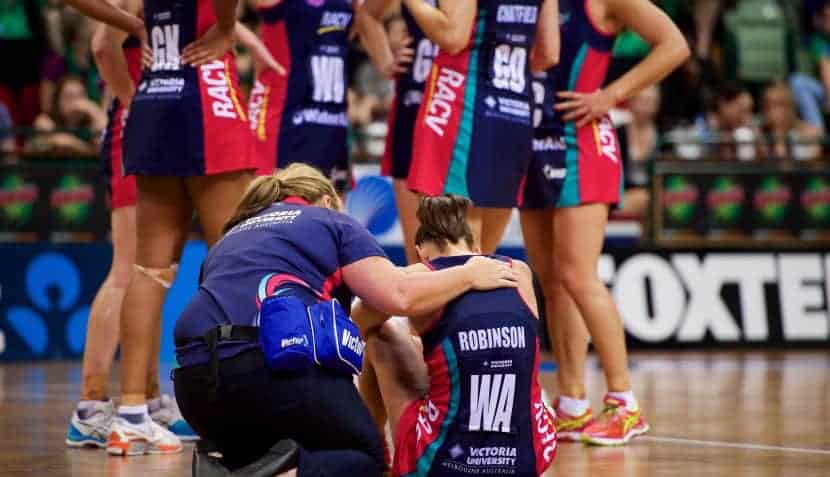
Netball-related foot & lower leg injuries—and how to avoid them
Guess what? Netballers are three times more likely to sustain lower leg or knee injuries than people playing AFL, soccer or both codes of rugby.*
In addition, Sports Medicine Australia reveals that the rate of injury for netballers is 14 injuries per 1,000 hours played.
Common netball-related foot injuries include:
• Ankle sprains & strains
• Achilles tendinopathy
• Sever’s disease in kids
• Osgood-Schlatter disease (Knee pain) in kids
• Patellar tendinopathy (aka “Jumper’s Knee”)
• Plantar heel pain – incorporating plantar fasciitis, tibialis posterior tendonopathy or abductor hallucis pain
Preventing netball-related injuries
“Awareness of widespread netball-related injuries and knowing how to avoid them can go a long way to ensuring you see out the entire season,” says sports podiatrist and founder of A Step Ahead Foot + Ankle Care, Dr Brenden Brown.

Ankle sprains & strains
“Ankle sprains typically occur as a result of involuntary sliding or twisting of the feet when you step on slippery or unstable ground. The sprain happens when the foot is forced into an unnatural position.
“The intensity at which the ligaments stretch can sometimes be so severe that it causes fracture or serious inflammation and pain.
“An ankle strain is an injury to the muscle or tendon. For example, overstretching the muscle or tendon can result in a complete or partial tear, with symptoms ranging from moderately painful to disabling.
“To reduce the risk of injury netball players need to perform strengthening movements. This refers to strength exercises that focus on the glutes along with balance and co-ordination of the lower limbs, as well as sports-specific exercises,” says Dr Brenden.
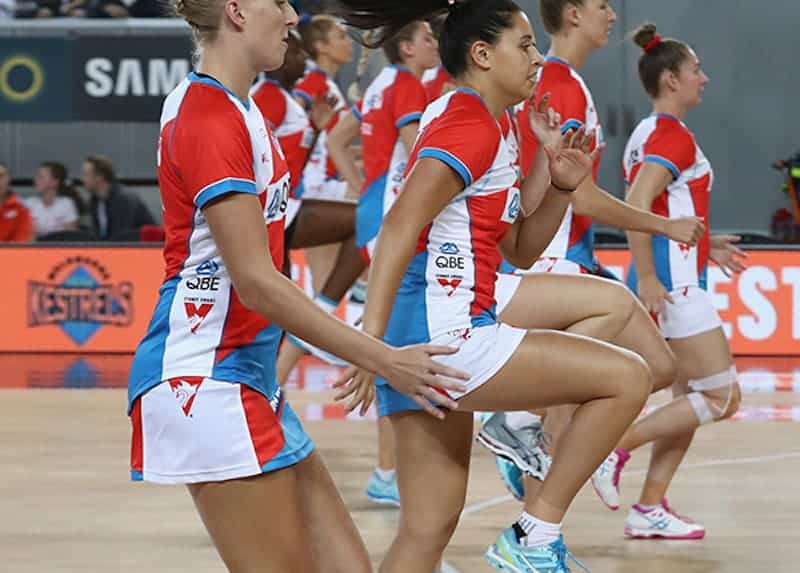
Achilles tendinopathy
“We know that the most common cause of achilles tendinopathy is change in load; this refers to sudden alterations in the intensity or frequency of the sport. (It has nothing to do with weight!) Dramatic changes place abrupt pressure on the tendon to over work and this gives rise to achilles-related problems,” explains Dr Brenden.
“Prevention is about increasing the load gradually, over a period of time. Make sure you have a long lead into sports season and ensure you adequately warm up the achilles.”
He adds, “People often don’t recognise that going from wearing high heels to a flat or low heel radically changes the load on the tendon. If you’ve spent most of the year in a corporate environment, walking around in heels then you suddenly change to wearing trainers it’s not uncommon for achilles problems to arise.
“To overcome this, practice wearing flat shoes at home several afternoons a week. Start doing this well before the season begins so that you’re changing the load gradually.”
Patellar tendinopathy
It’s common for patella-related injuries and the associated symptoms to be caused by musclular imbalance. Practicing lower limb stability and strength exercises can be useful.
“It’s important to warm up appropriately and wear the correct footwear for the sport you’re playing,” adds Dr Brenden.
Sever’s disease
Sever’s disease is more of a repetitive strain injury than an actual disease—resulting in inflammation and irritation of the growth plate. There are several causes, including rapidly increasing physical activity in volume, intensity or frequency; doing activity in bare feet, poor foot posture (flat feet) and weak foot muscles.
Sever’s disease should be addressed by ensuring you warm up adequately before playing sport. “Warming up prepares the body for sport by improving blood flow to the area, increasing the muscle temperature and making muscles more pliable,” says Dr Brenden.
“And don’t forget to wear the right shoes for the sport you’re playing!”
Plantar heel pain
Plantar heel pain is often referred to as plantar fasciitis, tibialis posterior tendonopathy, abductor hallucis pain—amongst a number of other conditions that can cause plantar heel pain.
To help ward off plantar heel pain Dr Brenden advises not to change from wearing high heels to low (or flat) heels too quickly.
“Again, rapid changes in frequency, intensity or volume place significant pressure on the tendons, which can cause excessive strain and lead to injury.”
Tips to prevent netball-related lower limb injuries
- Don’t rely on ankle braces! Strong muscles protect you from sprains far more than braces do! Your gluteal muscles – yes your butt — has a major role to play here!
- Make sure you warm up. Cold muscles are less flexible and more prone to injury. Check our Dr Brenden’s ‘warm up to success tips’.
- Don’t rapidly increase physical activity in volume, intensity or frequency. If you’re not all that active outside of netball season you need to allow a longer lead time.
- Always wear the appropriate footwear for your sport. Choose Netball shoes – its hard to go past the Asics Netburner range (See Dr Brenden’s article ‘Your guide to choosing the best netball shoe’ or head over to our YouTube channel for his Netburner reviews).
- If your pain or problems continue, visit a sports podiatrist to check your foot posture. Addressing foot posture prevents muscles from over compensating, leading to less ongoing problems.
- Ensure your footwear fits you properly (loose netball shoes can cause falls, increasing risk of ankle injury).
- Take the time to cool down. Slow stretching can reduce post-sports muscle tightness and soreness and may help reduce future risk of injury. An easy method is “Walk it out”. Don’t jump straight in the car and head home; allow yourself 10 minutes of moderate walking to cool your muscles down.
- If you know you have weak foot or ankle muscles, or you have poor foot posture, seek professional advice – All the stretching in the world wont get you better if your foot posture is continually meaning your muscles are over compensating. A trip to a podiatrist can help address the underlying foot posture issue.
- Ensure rehab is tailored to your needs. Netballers have specific groups of muscles they use – make sure your rehab is based around these muscles and your individual activity – Netball!
Next steps…
If this sounds all too familiar, we’d like to help. Perhaps this is something that a friend or relative may benefit from. If that is the case, we’d love you to share this article with them so they can find relief!
A Step Ahead Foot + Ankle Care is based in Western Sydney. We have multiple practitioners with loads of experience in this area. It’s our passion!
If you’d like more information, please contact our helpful front desk team. They are brilliant at working through what help you need, guiding you to the appointment that is right for your family, running through costings and then reserving your appointment time. Call us today on +61 2 9673 2987. We look forward to helping you.
Related articles:
About us
A Step Ahead Foot + Ankle Care is one of Sydney’s leading foot and ankle clinics. Principal podiatrist and founder of A Step Ahead Dr Brenden Brown (AKA Dr Foot) has been taking care of people’s feet for more than 20 years.
With a background in sports medicine and having served as a former president of the Australasian Podiatry Council, Brenden is a wealth of information when it comes to foot and ankle care.
Sources: * Australian Institute of Health and Welfare (December 2014)
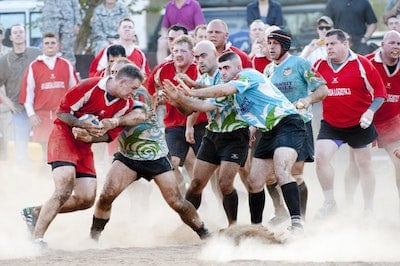
Blog, Sports Care

Winter sports’ greatest enemy…ankle sprain
Winter sports season means netball, footy and rugby union games galore (maybe even a spot of skiing!), but it also presents the increased risk of ankle sprains and strains…
“The chilly season means that muscles become cold. Without adequate warm-up exercises the muscles and connective tissue aren’t as flexible as they should be and this can lead to injury,” says Dr Brenden Brown, sports podiatrist and founder of A Step Ahead Foot + Ankle Care.
Dr Brenden is calling on health practitioners to “up their ankle game” beyond the simple “text book approach”.
“Ankle sprains are a common winter sports injury. They occur as a result of involuntary sliding or twisting of the feet when you step on slippery or unstable ground. The sprain happens when the foot is forced into an unnatural position
“The intensity at which the ligaments stretch can sometimes be so severe that it causes fracture or serious inflammation and pains. Doing whatever you can to prevent an ankle sprain is a no-brainer.”
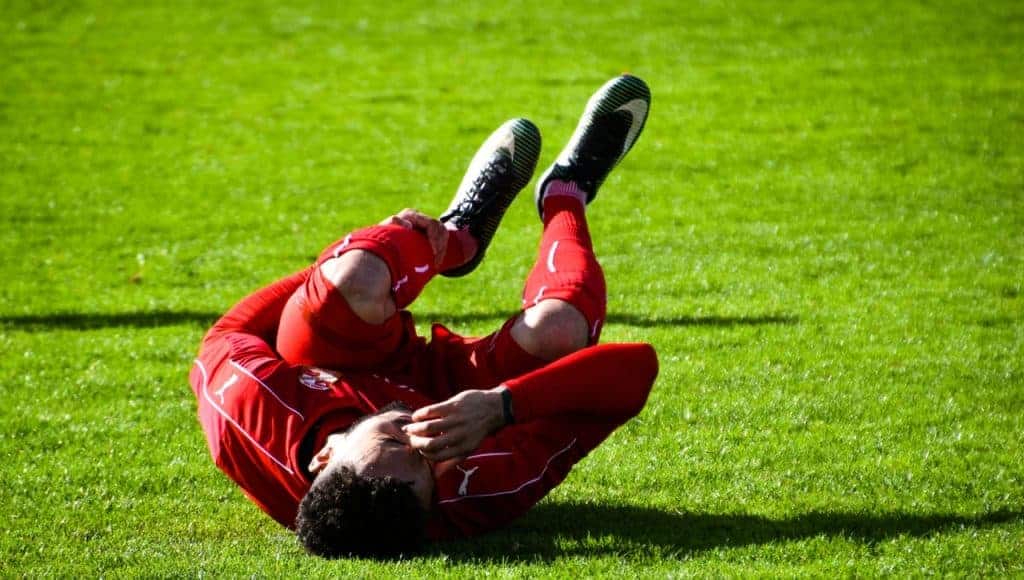
Avoiding winter sports ankle injuries
Planning ahead is a great way to prevent winter sports injuries—particularly when it comes to ankle injuries. With the right preparation and precautions you can reduce the risk of an ankle sprain or strain.
“The common preventative treatment for ankle sprains is balance exercises, but while this might go some way to help reduce ankle sprains the approach really needs to be multi-factorial,” says Dr Brenden.
“To lessen the risk of injury you need to use taping, bracing and practice strength exercises.”
But be warned, Dr Brenden explains that many healthcare professionals—including, physios, chiros, sports coaches and others—at times only suggest doing calf raises. He says, “This is fine if the sport you’re doing only requires you to move the ankle up and down, but if your sport means moving your ankles side to side (for example, skiing, netball, rugby league, football and almost all sports!) then calf raises are of no use.
“A textbook response to ankle sprains will often end patients in trouble. If your health professional is merely suggesting calf raises, it’s time to look further afield.
“More and more evidence suggests we need to look much further up the body, toward the gluteal muscles and alike.
“As such, your strength training needs to incorporate more than just your ankle and should be more sport specific.”
Dr Brenden says you need to functionally challenge the ankle in order to strengthen it appropriately and a special emphasis should be on preparation.
“Those participating in winter sports (or any sports for that matter!) can benefit from completing a tailored muscle strength-conditioning program. This is particularly the case if you’ve suffered a previous ankle sprain or are at high risk of injury.”

Points to note:
- Ankle strengthening activities should include hoping, jumping and cutting movements if that is part of your sport
- Strength exercises should include loading the muscles to be able to dynamically work as they would in your chosen sport
- Loading the muscle prepares your muscles for the activity ahead. This may include using more than just weight-bearing exercises and incorporating resistance-based training.
Additional measures to help prevent ankle sprains include:
- Warming up. Cold muscles are less flexible and more prone to injury
- Wearing footwear appropriate to your sport
- Making sure your footwear fits you properly (loose boots can cause falls, increasing risk of ankle injury)
- Taking the time to cool down. Slow stretching can reduce post-sports muscle tightness and soreness and may help reduce future risk of injury
- Knowing your limits and sticking to them
Treating your ankle sprain
The immediate treatment for an ankle sprain is the RICE approach. This incorporates: Rest, Ice, Compression and Elevation.
- REST: “if it hurts don’t do it”. Giving your ankle a period of rest after the sprain can assist with healing
- ICE: apply ice packs to the ankles, or area of discomfort
- COMPRESSION: apply bandages over the injured area. Compression socks are available from your local podiatrist’s clinic
- ELEVATION: lift the foot up above the waist or heart.
“Evidence shows that ankle sprains are unlikely to get better by themselves. Plus once you have an ankle sprain, you’re significantly more likely to have another sprain.”
“So just like the pre-sport preparation phase, it’s time to get back to strength and exercise-based rehabilitation as your next phase in rehab,” says Dr Brenden.
Related articles:
Your guide to rock-solid ankle stability
Your guide to choosing the best netball shoe
Your guide to choosing a footy boot
Think you have a heel spur, think again
A Step Ahead Foot + Ankle Care is one of Sydney’s leading foot and ankle clinics. Principal podiatrist and founder of A Step Ahead Dr Brenden Brown (AKA Dr Foot) has been taking care of people’s feet for more than 20 years.
With a background in sports medicine and having served as a former president of the Australasian Podiatry Council, Brenden is a wealth of information when it comes to foot and ankle care.
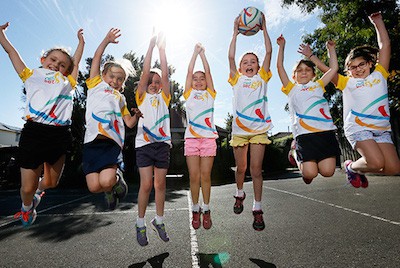
Blog, Sports Care
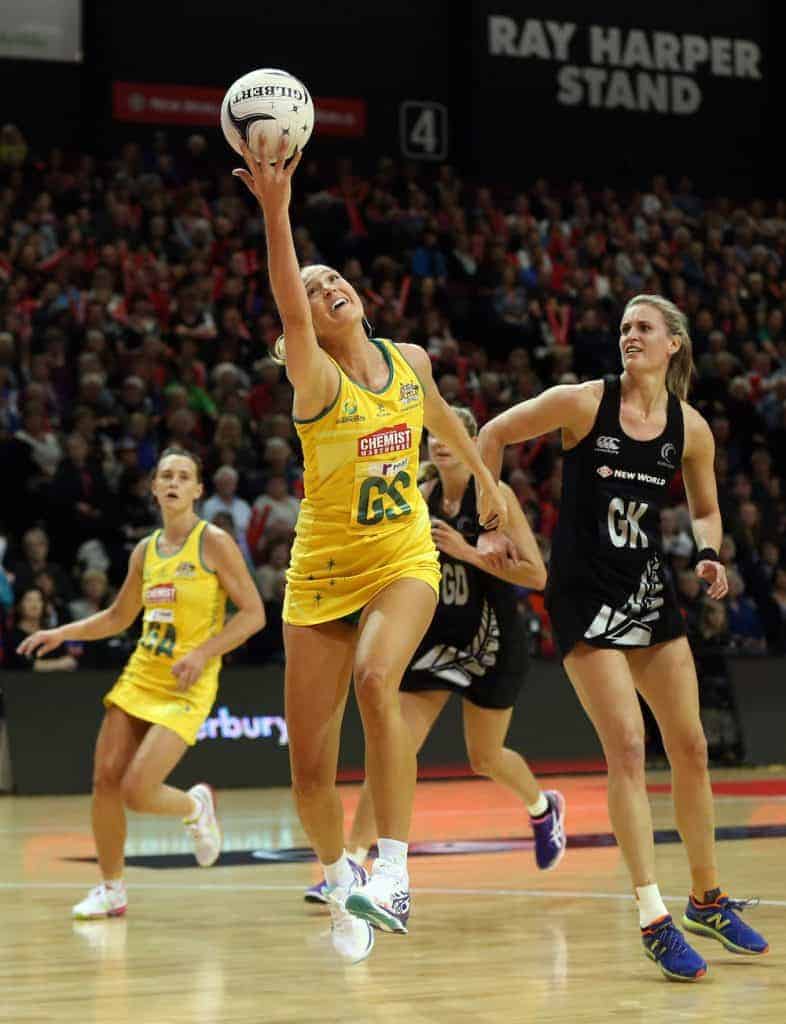
Your guide to choosing the best netball shoe
“The days of calling netball a non-contact sport are well and truly over,” says sports podiatrist and founder of A Step Ahead Foot + Ankle Care Dr Brenden Brown.
He says netball is not only physically demanding, it’s a high-impact sport in which foot and ankle injuries are rife (particularly if players aren’t wearing appropriate footwear!).
Do players really need new netball shoes every season?
Short answer is, ‘Yes, they do!’
“Netball involves lots of twisting on one foot, side to side motion, jumping and running—as a consequence, many players get ankle sprains. Having a new pair of shoes at the beginning of netball season is essential. It’s an injury-prevention no-brainer!
“Good quality netball shoes go a long way to assisting with injury prevention. I witness this time and time again…I’m a netball Dad and when I see a child on the sideline with an injury, it’s universally in a poor shoe,” says Dr Brenden.
Regular runners vs netball shoes: what’s the difference?
Mark Doherty, ASICS general manager of product, knows a thing or two when it comes to sports shoes. He explains that the sole of a netball shoe is a lot different to that of a running shoe.
“We tend to use solid rubber in the soles of our netball shoes, whereas in a running shoe we use blown rubber which is an air injected rubber.
“While we want netball shoes to be lighter and lighter, we also need to make sure they last and offer the wearer the protection they require.
“Solid rubber has the ability to wrap around the shoe and it also stabilises the shoe so that when you go into cross-lateral movements there’s the solid platform you need.
“If you were wearing a running shoe, the shoe could potentially collapse on the lateral sides because of the movement involved in netball.”
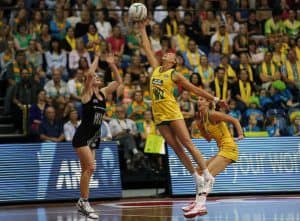
What makes a great netball shoe?
“When choosing a netball shoe consider cushioning, stability, support and weight (you want it to be lightweight). A firm heel counter is important and there should be minimal twisting or ringing out of the shoe,” says Dr Brenden.
“An adequate toe box is essential too. Make sure the shoe is comfortable and roomy enough around the toes when you first try it on; these shoes are NOT designed to stretch.”
Mark says the basic principle is that a netball shoe should have a more stable base than a running shoe, but it’s also important to consider durability and performance of the shoe to last longer.
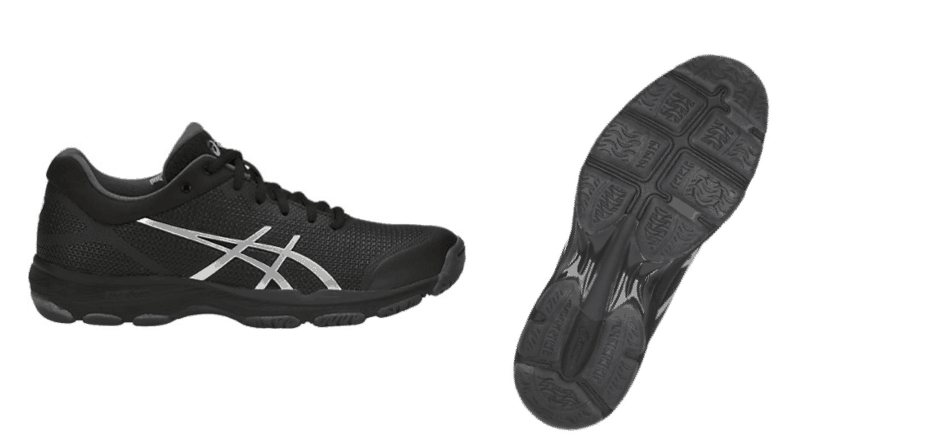
Are new designs just marketing hype?
“We have a couple of top shoe models that we change every two to three years, based on the latest technology. This might allow us to make the shoe lighter, more durable or more flexible,” says Mark.
“For 2018 ASICS’s introduced the new Netburner Professional with an updated midsole foam that’s much lighter than any foam we’ve ever developed before.
“The Professional has more of a running-type feel to the shoe with the added bonus of that extra protection that’s needed in a netball shoe.”

Final note: It pays to get professional advice when choosing a netball shoe.
“When you’re buying a sports-specific shoe, it’s a great idea to get professional advice.
“If you’re someone with a really high arch and you select a shoe that’s designed for someone with a low arch you are VERY likely to increase your risk of injury,” says Dr Brenden.
“Shoes differ from season to season—for example the Netburner Professional has a new, more flexible, upper material this year—which can change the feel of the shoe.
“But also, a shoe is like a fingerprint; because of the amount of manual labour involved, no two shoes are the same,” says Mark.
“Even if you pull out two size eights in the same shoe, there can be slight differences because of the tolerances you have in midsole density or the upper might be slightly different. It’s always best to try on shoes to allow for these minor differences.”
A Step Ahead Foot + Ankle Care is one of Sydney’s leading foot and ankle clinics. Principal podiatrist and founder of A Step Ahead Dr Brenden Brown (AKA Dr Foot) has been taking care of people’s feet for more than 20 years.
With a background in sports medicine and having served as a former president of the Australasian Podiatry Council, Brenden is a wealth of information when it comes to foot and ankle care.
Got a foot-related question? AskDrFoot
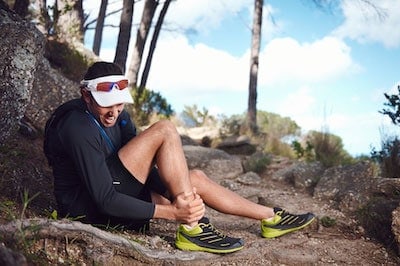
Blog
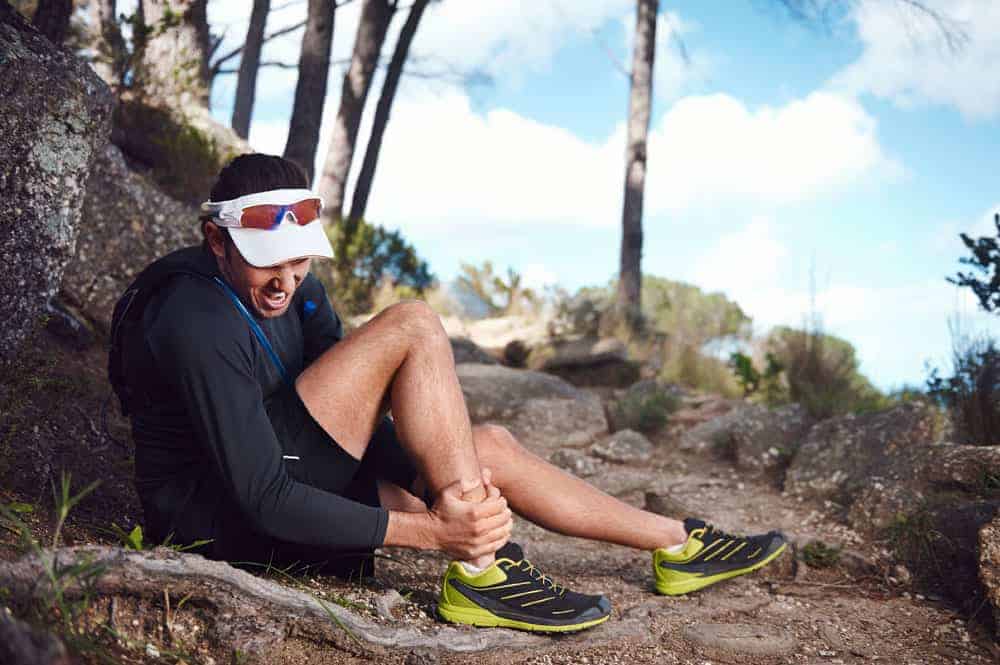
Your guide to rock-solid ankle stability
Your feet and ankles are the foundation of your body so imagine the persistent feeling that your ankle is going to “give away” or actually having your ankle collapse under the weight of your body? Ouch!
Sports podiatrist and founder of A Step Ahead Foot + Ankle Care Dr Brenden Brown explains, “Ankle instability is that uneasy feeling that your ankle is going to roll out, particularly when walking or running on rough surfaces.
“We tend to think of these ‘rough’ surfaces as being a rocky terrain or very unsteady ground but for someone who has had a previous ankle sprain, a rough surface can simply be a bump in a soccer field.”
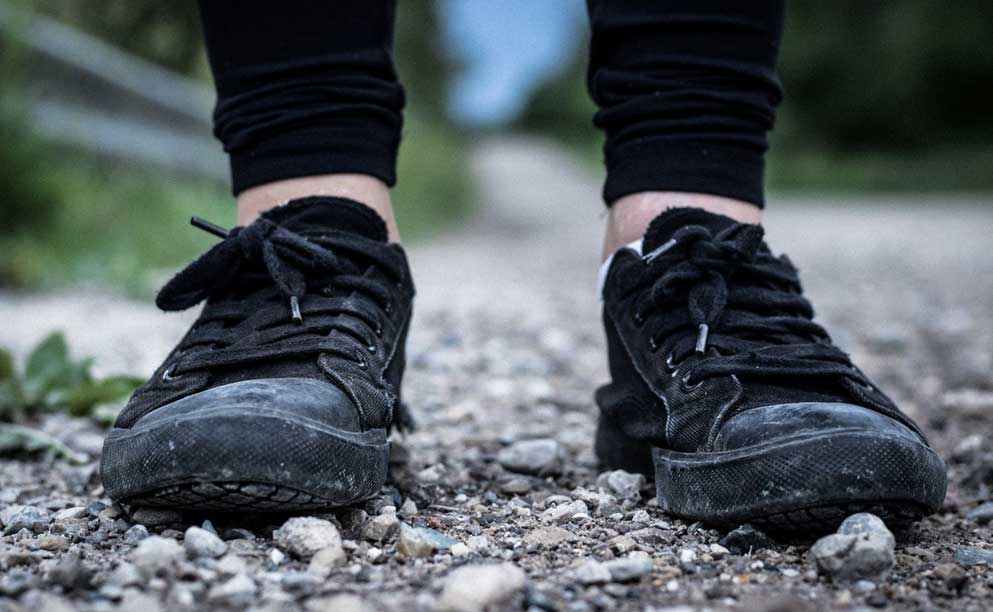
So what are some key points about ankle instability?
- Having an ankle sprain increases the chance of another ankle sprain
- Those people who have an ankle sprain but don’t undergo physical therapy and rehabilitation are significantly more likely to re-sprain
- Repeated spraining or injury to the ankle can lead to chronic ankle instability (this can seriously effect quality of life)
- In fact, 33% of people with first time ankle sprains go on to develop chronic ankle instability.
- You can’t cure ankle instability by doing nothing. Evidence suggests it’s very unlikely it will get better by itself.
- Stopping exercise or playing sports won’t alleviate ankle instability but could cause other negative health impacts.
While many people underestimate the impact of ankle instability and simply don’t pay their ankles the attention they deserve, other causes include hyper-mobility (being double jointed), a very high foot arch and weak muscular control in a single leg.
Treating ankle instability
“When it comes to treatment, it’s important to note that it’s not just about the ankle – you need to consider the whole limb,” says Dr Brenden.
“Unfortunately, there’s also the common misconception amongst many health professionals that a single style of treatment will make ALL ankle sprains better. This isn’t so; treatment should be tailored to the type of sprain.
“Similarly, there’s the misunderstanding that wearing an ankle brace or taping the ankle will prevent ankle instability. Not so.
“We’re finding that the entire leg, in particular the glutes and all the muscles above the ankle are more vital than we ever thought before.
“If you have weak glutes or poor hip function on your left hand side you’re significantly more likely to twist your left ankle.”
Aside from just focusing on the ankle itself, Dr Brenden says there’s a growing body of evidence to support strength work through exercise.
This involves firstly identifying where the muscle imbalance is coming from and then performing targeted strength exercises.
“I have a real problem with healthcare practitioners who only ever tell people with ankle instability to do calf raises. If you’re a tennis player, calf raises are inappropriate because you’re jumping side to side rather than raising the feet up and down.
“Rehabilitation exercises need to be specific to the sport you play. You can’t take a ‘one-size-fits-all’ approach.”
Other methods of treatment include:
Footwear— A firm base and firm heel counter (we’re talking good quality trainers) is important while the ankle is unstable.
Orthotics—There’s a sound body of evidence that suggests looking at foot posture can be helpful. Over use of the muscles can affect the way the foot moves and, if left untreated, this can lead to ankle instability.
“The vast problem is that people delay treatment and end up having multiple ankle sprains, which not only damages the anterior talofibular ligament (ATFL) but the surrounding muscles as well.”
Ultimately, poor ankle stability can lead to a chain reaction of injury so it’s important to talk to your local podiatrist to find out the best method of action.
A Step Ahead Foot + Ankle Care is one of Sydney’s leading foot and ankle clinics. Principal podiatrist and founder of A Step Ahead Dr Brenden Brown (AKA Dr Foot) has been taking care of people’s feet for more than 20 years. With a background in sports medicine and having served as a former president of the Australasian Podiatry Council, Brenden is a wealth of information when it comes to foot and ankle care.
Find out more about ankle sprains and how to treat them
Got a question? Check out our Instagram profile #AskDrFoot
Or simply tune into our Facebook page for regular live videos and updates on the latest foot and ankle advice from the experts.




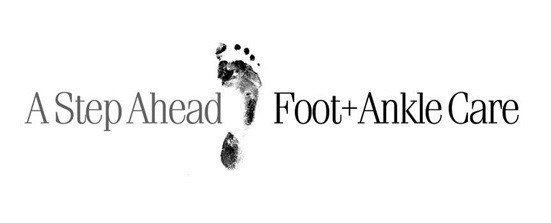















 Dr Brenden’s White paper report on the “6 Reasons You Won’t Beat Heal Pain” outlines what’s stopping you from beating this and tips on how to stop it in its tracks!
Dr Brenden’s White paper report on the “6 Reasons You Won’t Beat Heal Pain” outlines what’s stopping you from beating this and tips on how to stop it in its tracks!